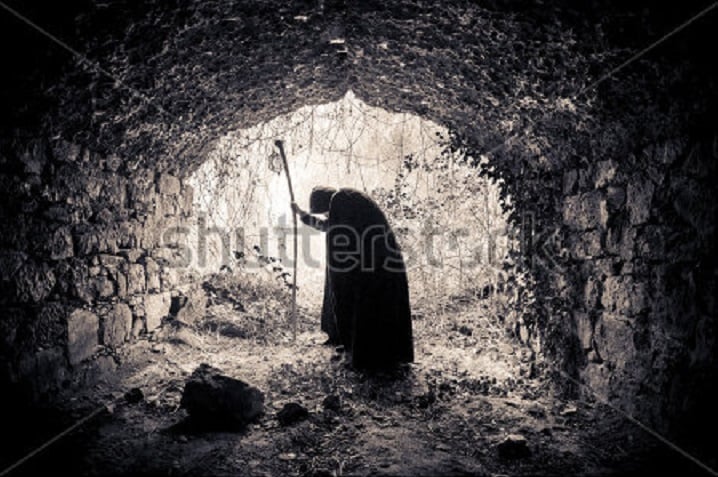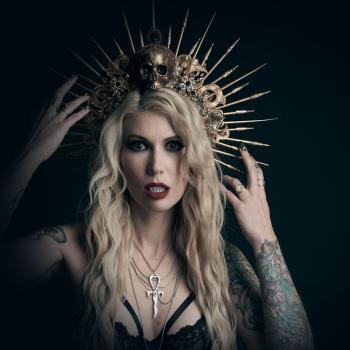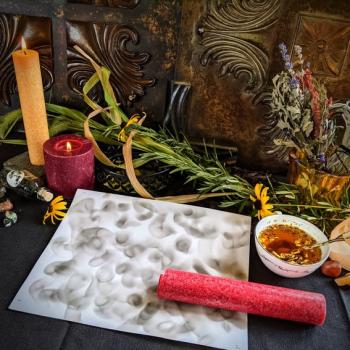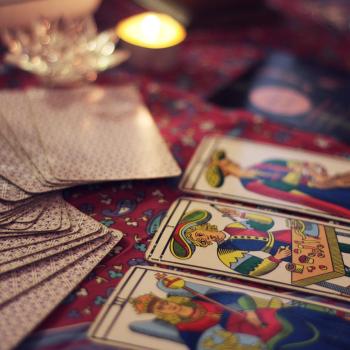Something Worth Witching For.
To attempt to define witchcraft is like trying to capture smoke or bottle moonlight. It is constantly changing, shifting and evading definition. Just when we think we have captured its essence another veil is lifted only to reveal a deeper mystery. The answer to this question will never suffice to capture what witchcraft is in its entirety. Any verbal or written definition will be superficial; a finite container attempting to contextualize something infinite. Even the most eloquent descriptions of the art of witchcraft leave something to be desired. Human language, especially English, does not have the nuance to capture something that can only be experienced.
Witchcraft is something that we just know deep inside ourselves. When we see something fantastic, terrific and breathtaking; there is that moment when the world is illuminated with magic and something primal within us says “yes, this is it.” Some people spend their lifetimes searching for this affirmation. This moment that confirms that all the study and practice was worth something, that that which was sought is finally found. For those who are lucky enough, it is this type of experience that finds them and leads them to witchcraft in the first place. For others it is a sense of knowing that there is something more out there, something waiting to be found and to be understood that drives this spiritual pursuit. Witchcraft is nothing if not spiritual. It may not be religion as the modern world knows it, but its connection with the spirit world is undeniable. The belief of those who practice it is undeniable.
It comes from a time before the indoctrinated religions of human history, a time when a relationship with the spirit world was so tightly woven into daily life that the two were indistinguishable. It was about survival.
“White magic is poetry, black magic is anything that works.” Victor Anderson, Grandmaster of the Faerie Tradition
 Black Sorcerer by Estremo. Shuttershock. Free License Images.
Black Sorcerer by Estremo. Shuttershock. Free License Images.
Re-Conceptualizing Magic and Witchcraft
There are numerous types of magic in the world; each culture having its own collection of legends, lore and ideas about what magic is. Even in antiquity when magic was practiced widely and openly there existed something else. Something different and dangerous that existed on the periphery. It wasn’t focused on petitioning the gods of the royal pantheons, and eventually was distinguished from acceptable forms of magic being made illegal. It was something foreign and not understood by the dominant culture. Legends of witches in distant lands pervaded ancient cultures.
The Renaissance and Romantic periods brought back an interest in the gods of the classical world and the study of natural magic, astrology and alchemy. These practices were by many considered an acceptable scientific approach to understanding nature. When looking back to history one finds subtle differences to the multitude of magical practices in existence. There were distinct characterizations and categories of distinct practices that did not fall under the same umbrella. Something that has been lost to modern magical society.
Witchcraft is the art of using magic like a Witch would use magic.
Witchcraft is the art of fashioning a magical practice according to the inner currents of an individual’s spirit. Magic is easily definable and there are a plethora of practices one can choose from to do so; to create change in accordance with will. Witchcraft is more ambiguous, something always just out of reach that draws one further into the shadows. Witchcraft is not so much about what one does as it is something that lives inside of us. It is not the collection of spells one has, the tools they use or the traditions they keep. When it is there it is undeniable. As it draws us closer to the spirit world it comes alive, becoming electrified. When it is among the mundane and its inhabitants it yearns to return to the other.
While a witch can utilize any of the magical systems and practices available to them; they are only tools and do not define us or what we do. Witchcraft is the innate ability to work with these tools and discover new ways of wielding them. One who calls themselves a witch for the sake of a title is like a painter calling themselves an artist. Some of the world’s greatest artists were not recognized as such until after leaving this world with only their work to speak for them. The word witch evokes more power and mystery when it is whispered by others behind closed doors, not exclaimed to the world by a would-be bearer of a title.
Witchcraft is resilience, it is survival in the face of adversity. The spirits of witchcraft are fierce and independent. They are not jealous gods and do not require the smoke from our offerings or the prayers from our altars. They are the elder spirits of nature; the wind, the storm and the night sky. As old as the stars, they are watchers that exist of their own accord. They want us to be as they are, physical agents of their vastness. They are the strange, the dark and the unnamed. And as such they will not be tamed. This is witchcraft.











